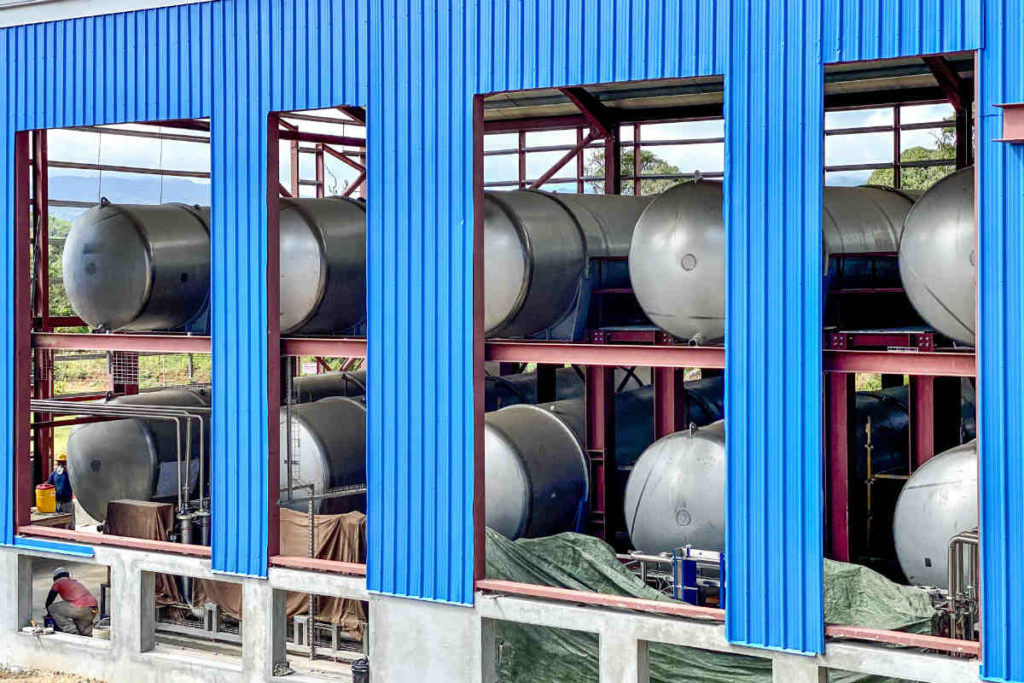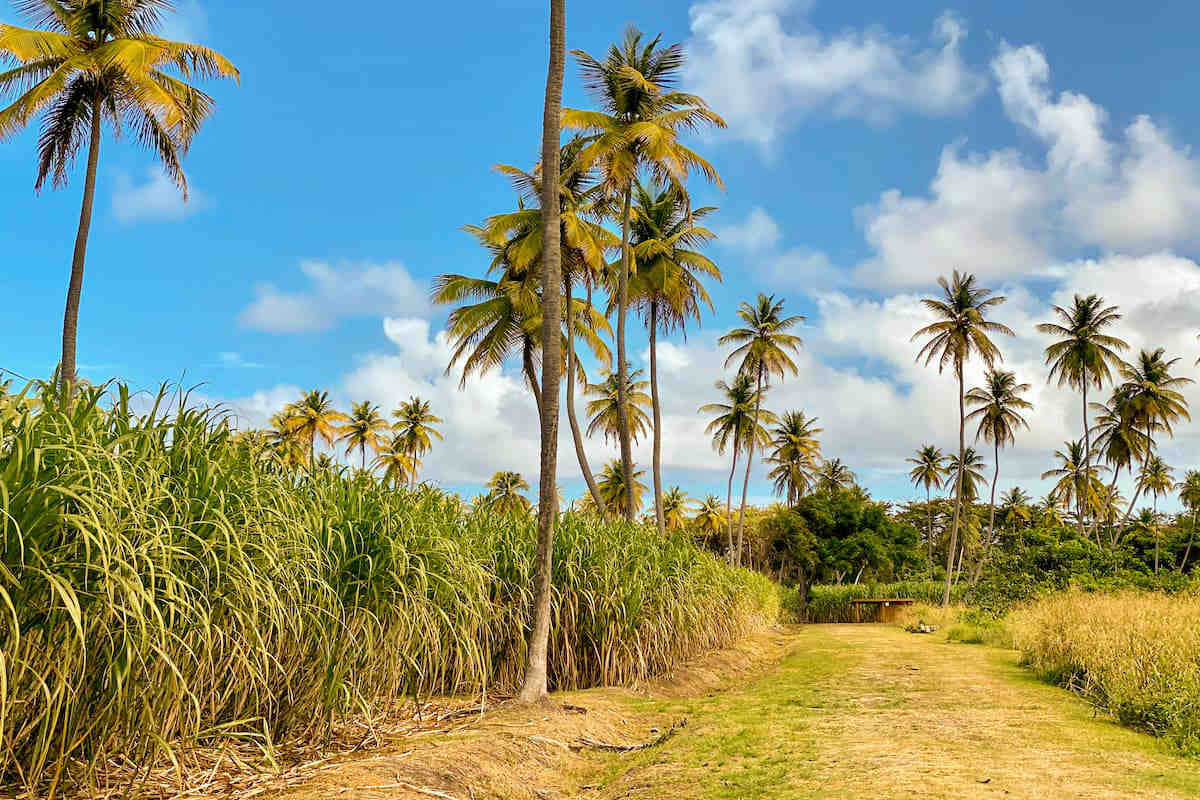Once a substantial sugar and rum producer during the British colonial era, the tiny Caribbean island of Grenada, tucked between Barbados and South America, saw its sugar heritage slip to almost nothing by the 1980s. It’s still home to River Antoine, an extremely old-school distillery seemingly untouched since the 1700s. But that historic operation will soon be joined by a newcomer. Because in 2020, Grenada will welcome what is arguably the most modern, forward thinking rum distillery on the planet—one that’s focused on terroir, the characteristic flavor imparted by the environment where it’s made.
Renegade Rum
Renegade Rum is the company behind this ambitious endeavor. Old guard rum enthusiasts may remember Renegade from their independently bottled rums a decade ago, but their Grenada operation is a complete reversal of the original script. The company now controls every aspect of rum production, starting with planting sugar cane.
If this sounds audacious, Renegade’s team has two decades of experience taking the road less traveled, creating opportunity out of challenges. Their story begins in 2000, when CEO Mark Reynier and a team of investors purchased the shuttered Bruichladdich scotch whisky distillery on Islay. With a shoestring budget and using much of the original century-old equipment, they turned Bruichladdich into a profitable darling of whiskey enthusiasts.
As a long-time enthusiast of terroir in wine, Reynier was eager to apply the same principles to spirits. Towards that end, Bruichladdich purchased Islay-grown barley to make Islay-specific releases. It was a first glimpse of Renegade’s future plans. It was also during this time that Renegade rum started by buying bulk rum to age in Bruichladdich’s warehouses.
After selling Bruichladdich in 2012, Reynier and his team purchased an unused brewery in Waterford, Ireland and converted it into an Irish whiskey distillery, eponymously named Waterford Whisky. A core concept from the outset was extending terroir-driven whiskey even further.
Waterford purchases barley from local farmers and makes a single batch of whiskey from each farm’s harvest. Each bottle of Waterford is made entirely from one farm’s harvest; the bottle even bears the name of the farm. It’s a technical challenge to accomplish, running against most norms of bulk spirit production, but it’s a core part of Waterford’s DNA.
From Whiskey to Rum
How does Grenadian rum tie into all this? While the Renegade team spun up Waterford, Reynier still had his eye on the rum world. Dissatisfied with the rums available to independent bottlers, he decided to make his own rum, taking farm-specific terroir to the same levels as he did with his whiskeys.

When it comes to maximizing rum terroir, freshly milled cane juice is the undisputed way to go. Molasses, which is heavily processed, isn’t even close. Since cane juice spoils within hours, the cane fields and distillery must be close to each other. Renegade’s team selected the northeastern coast of Grenada for the distillery, in part because the island’s highly varied topography and soils create many different cane-growing conditions.
Renegade’s original plan was to build a state-of-the-art distillery and to work with local cane farmers to grow exactly the cane varietals that Renegade desired. That plan hit a very early snag: Local cane farmers didn’t have the ability to supply all the cane required. Thus, Renegade set to work growing cane themselves by way of their CaneCo subsidiary.
So far, about 200 acres have been planted and a sea of green cane stalks points upwards towards the impossibly blue Caribbean sky. As at Waterford, each cane harvest will be distilled and bottled separately from other harvests.
Rethinking Rum Distillation
The Renegade Rum distillery was nearing completion during my visit in 2020. It’s comprised of three distinct buildings, all painted blue, and each implementing a core function of rum making: cane crushing, fermentation, and distillation. Off to the side is the aging warehouse, also painted, you guessed it, blue.

Beyond terroir, another core ethos of Renegade is environmental responsibility. Towards that end, the distillery was designed in reverse: First, designers determined how much distillation-related waste could be processed with (essentially) zero environmental impact. Then they sized the distillation capacity accordingly, which informs how much fermentation capacity and cane crushing ability are required.
Much of the distillery’s power is supplied from the very cane it crushes in its enormous three-pass mill. By utilizing advanced crushing techniques and a specially designed biomass boiler, crushed cane waste (bagasse) can fuel the boiler almost immediately after crushing.
The distillery makes use of a most unusual fermentation setup. Rather than the upright vats where cane juice and yeast work their magic, fermentation instead bubbles away in a phalanx of shipping-container sized horizontal metal cylinders. I’m told this puts less stress on the yeast, making for a better rum.

Distillation is via two stills: A double retort pot still, and a twin column continuous still, both made by Forsyths in Scotland—the same company that makes most scotch whisky stills. Pot distilled cane juice rum is relatively rare, so this has enthusiasts salivating. Once fully operational, Renegade will distill about one million liters of absolute alcohol—or LAA—a common industry metric for measuring distillery size. This puts Renegade in the same ballpark as Jamaica’s Worthy Park, but far smaller than massive distilleries like Puerto Rico’s Bacardi.
Except for (perhaps) some very limited initial releases, Renegade will age all its rum on-site before releasing them in small batches corresponding to specific cane field harvests.
As of this publish date, the distillery is in its very last testing steps before the mills turn and the rum flows. Thus, it will be a few years before the first Renegade rum bottles roll off the bottling line. It’s a safe bet that once they do, rum enthusiasts and collectors will play Rum Pokemon, rushing to collect them all.



